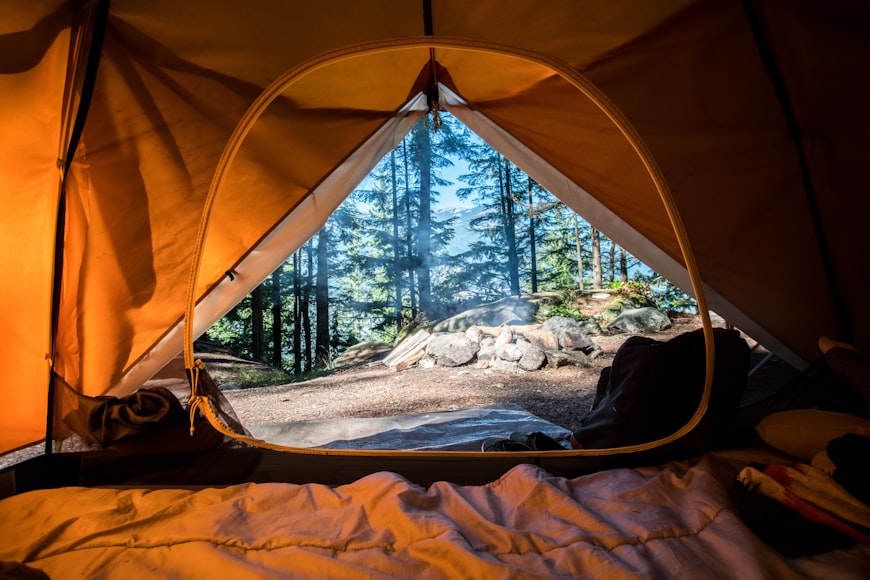Hesitating about whether to buy or not to buy a tent footprint? You're in the right place! Luckily, the answer is much simpler than the one to a controversial question like can you use a stove in a tent, which involves a range of safety rules and is really a tough decision to take. Footprints are more straightforward stuff to discuss. In this guide, we're explaining what a tent footprint is as well as discussing the pros and cons of using it. Let's get down to business.
WHAT IS A TENT FOOTPRINT?
A tent footprint, also known as a ground cloth or a groundsheet, is a waterproof sheet that is placed underneath your tent. The material of a footprint can vary. Still, most of them are produced from durable and easy to clean polyethylene. Lighter versions are made out of oxford or lower denier polyester material.
WHAT ARE THE ADVANTAGES OF USING A TENT FOOTPRINT?
Here are four major benefits of using a tent footprint.
1.It can help prolong the life of your tent
You hardly ever have a chance to set up your tent on a perfectly even, clean surface. Twigs, stones, and mud can damage the bottom of your wildlife shelter, considerably shortening its lifespan. However, if you place a footprint between the ground and your tent, you'll significantly reduce the risk of damaging your precious gear. A sturdy footprint does an excellent job at shielding the bottom of your tent against cuts and abrasions and functions as effective protection from mud.
2.A footprint will save you time and cost
As a footprint creates a barrier from mud, you'll considerably cut down on the tent maintenance routine. You'll save plenty of time you would typically spend cleaning your tent base and drying it out. You always come back with a clean tent with a footprint, and washing a dirty groundsheet doesn't take much time and effort.
Next, footprints are pretty affordable (actually, you can go for a DIY option that will cost you a couple of dollars), so you can easily replace a groundsheet without spending a fortune. However, if you damage your tent's bottom, you'll definitely have to pay way more bucks to fix it.
3.Groundsheets provide extra insulation
By using a groundsheet, you add an extra layer between your tent and the ground. This layer provides a greater level of insulation, which means cutting down the amount of heat lost to the ground. Therefore, a footprint can help make your shelter warmer, so don't neglect this simple invention when you're setting off for a cold-weather camping trip.
4.A footprint can help you select a perfect spot
This has happened to almost every camper: you put up your tent, get inside, and feel a nasty root/twig/stone under your back. A footprint can help you test the spot before you pitch the tent: spread it out on the site of your choice and then lay down to test if the spot is okay. The same trick works well when you need to fit many tents into a single campsite: adjust groundsheets as many times as you need to achieve the perfect arrangement of tents.
Image Source URL : Unplash
WHAT ARE THE DISADVANTAGES OF USING A TENT FOOTPRINT?
Although a groundsheet provides some clear benefits, there are several reasons why you might want to leave it at home.
1.A footprint means extra weight and space in your backpack
Footprints are great, but they tend to consume precious space in your pack. It looks like you'll prefer to do without a footprint if you're an ultralight camper.
2.Your tent has an extra durable floor
If your wildlife shelter features a sturdy floor that is produced of 30+ denier material like this best 3 person camping tent, you can skip the groundsheet.
3.You camp on soft terrain
If the terrain you're camping on is softer than your tent's base, a footprint isn't necessary. Fair enough, as grass or sand isn't likely to cause any damage.
HOW TO USE A GROUNDSHEET?
Using a groundsheet is really a no-brainer! Everything you need to do is to spread it out on the spot you've chosen, erect the tent on top of it, and (important!) tuck the excess material under the tent floor. Actually, your footprint should be around two inches smaller than your tent's floor — you shouldn't be able to see it after putting up your tent. Why? This is essential if there's a chance of rain. If your groundsheet is bigger than your tent's base, the water will pool up around your tent and penetrate underneath it. Trapped between your tent and the footprint, the water won't be able to drain, so it will keep on accumulating, which means having problems that can ruin your trip.
HOW TO CLEAN A TENT FOOTPRINT?
Cleaning a footprint is as easy as pie: just wash away all the dirt with water and a clean cloth. If your groundsheet looks extremely dirty, use scrubbing pads, but be careful not to be excessively rough.
To wrap it up
All in all, there are no convincing reasons not to bring a groundsheet to the camp. Who wouldn't love their tent to be protected from cuts, clean, and warm? In case you don't want to haul the extra weight of a manufactured footprint, it's a good idea to make a DIY sheet for just a couple of dollars.








